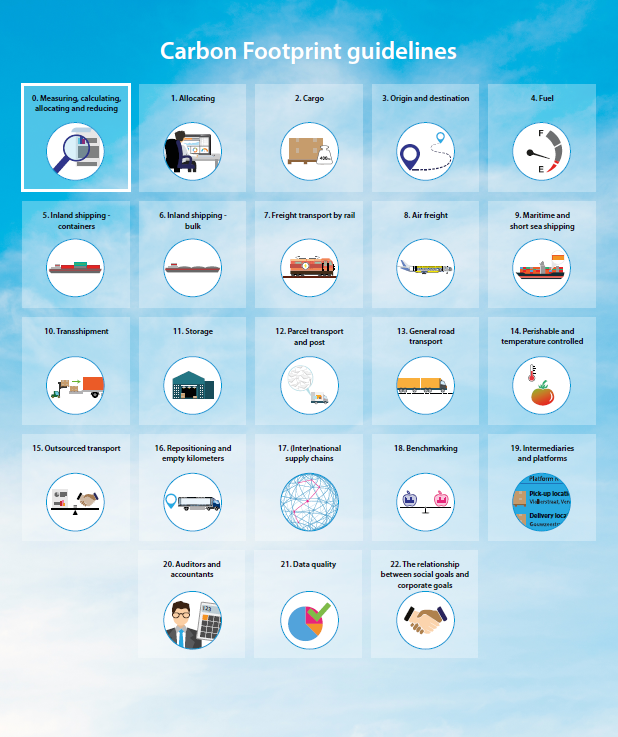ISO/NEN Guidelines
Allocation: load and distance
This allocation is determined on the basis of the amount of cargo in the suborder, and on the basis of the distance between origin and destination.
For the quantity measure, the historical choice was tons, thus weight. This dates back to the time when (heavy) bulk goods were mainly transported. Nowadays, there are many types of cargo where the quantity is not limited by the load capacity in tonnes, but by the volume of the cargo: packets, plants, consumer products, clothing, etc. For that cargo, the volume is considered, whether or not it is counted in crates, pallets or roll containers.
The discussion has been about the distance measure.
Distance
Distance between origin and destination can be viewed in different ways in logistics:
– actual distance travelled by the vehicle (Actually Driven Distance: ADD)
– Planned distance (PD)
– Shortest feasible distance via a walkable route (SFD)
– Skyward distance, as the bird flies (Great Circle Distance: GCD)
Intuitively, transporters choose the driven or planned distance. This is an excellent measure for estimating the consumption of the vehicle, but for distributing the emissions over all the cargo it gives strange results.
The ISO standard is therefore expected to allow two distance measures: the shortest possible distance between origin and destination (i.e. not the diversions via all stops) (SFD), and the bird’s eye distance (GCD). For aircraft, maritime transport and full trips up and down between two locations in a flat country, these are almost the same. It is different in mountainous areas, or if you compare road transport and inland navigation: then there are obvious differences.
In the following, the advantages and disadvantages of the various distance measures that led to the choice of these two measures are discussed.
Actually Driven Distance
The big advantage of using the actual distance (ADD) is that you can very precisely estimate the amount of fuel used. An advantage that applies to a lesser extent to the planned distance (PD) and to an even lesser extent to the shortest possible distance (SFD). But in practice, transporters already have reliable data on fuel, making estimation of consumption unnecessary.
This distance measure is unsuitable for allocating orders: if in a 200 km round trip the last pallet is delivered 10 km from the depot, then it is very odd to use 190 km driven distance as an allocation measure. This pallet will then receive almost all of the CO2. And if the journey were planned the other way round, this pallet would be allocated almost no CO2 at all.
Allocating CO2 is like allocating the cost of the trip: this customer gets a price that fits the 10 km distance, not the 190 km.
Planned Distance and Shortest Feasable Distance
Using the Planned Distance (PD) is like using the ADD, it solves little. Using the shortest feasible distance (SFD) is much closer: in the example above about 10 km, which fits with the price calculation.
Great Circle Distance: GCD
The Great Circle Distance feels uncomfortable at first, but it works well both in theory and in practice. With GCD, emissions are allocated proportionally to the geographical distance travelled, making it a good measure of emission efficiency. Certainly if several modalities are compared: does a diversion via a river with an economical ship produce more or less emissions for that cargo than a truck that can drive almost directly?
The nice thing about a distance as the crow flies is that you only need to know the location of origin and destination, then anyone can calculate the distance: no discussion about the route, you don’t need to know anything about that.
ISO standard: SFD en GCD
This has led to the proposal to allow both SFD and GCD in the ISO standard. In the report GCD as optimal distance metric, more can be found about the analysis of the advantages and disadvantages of the different measures.
Report Great Circle Distance

Guidelines Carbon Footprinting

